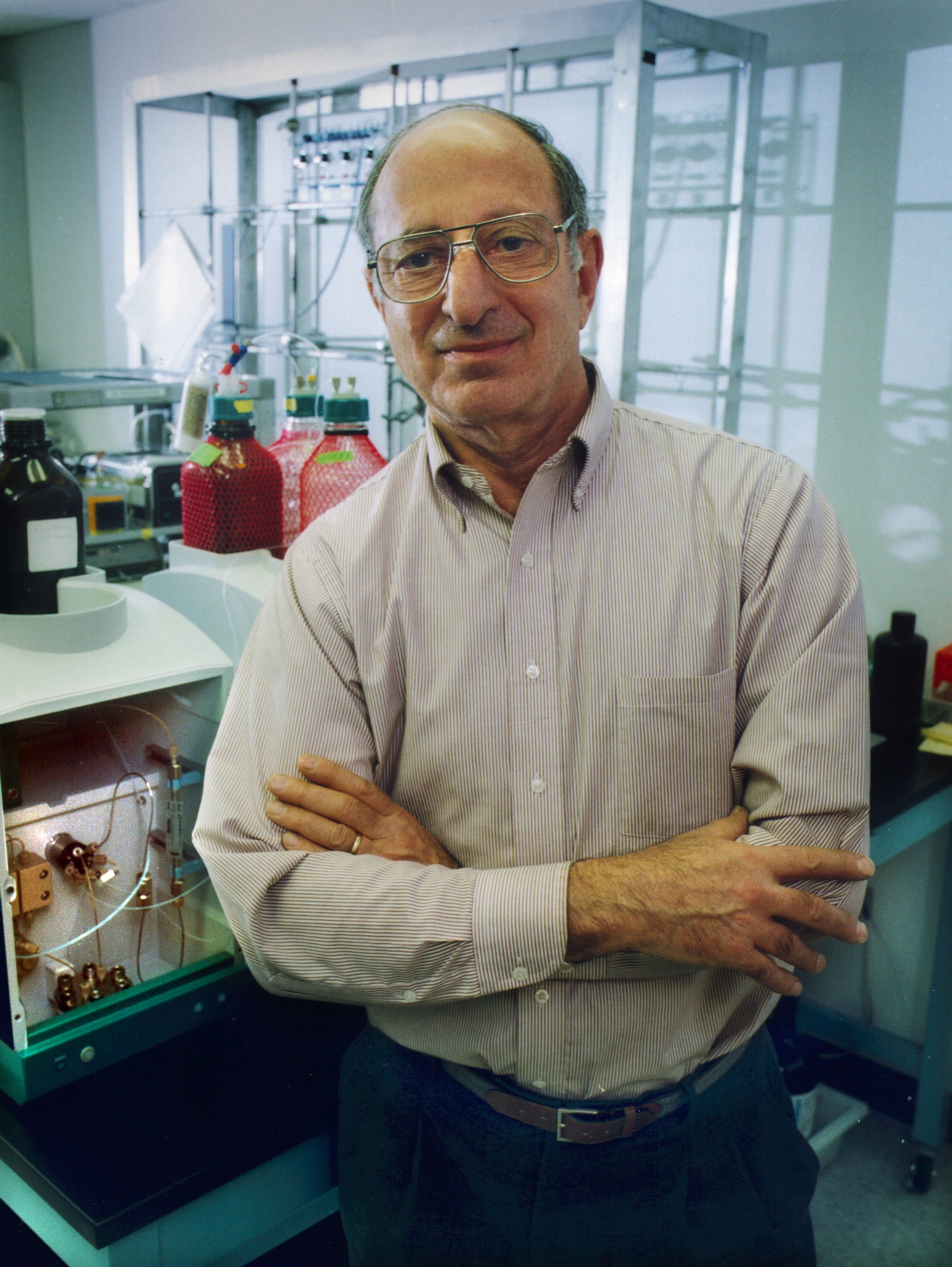
Brookhaven atmospheric researcher and scientific leader passes away at age 91
Leonard Newman, a retired atmospheric scientist at Brookhaven National Laboratory (BNL), died recently after a brief illness. Newman was 91.
Newman joined BNL in December 1957, soon after he received a PhD in chemistry from the Massachusetts Institute of Technology.
The Laboratory was 10 years old, and Newman was about to embark on a long journey as a scientist who made significant contributions to atmospheric chemistry and, later on, to BNL’s Laboratory-Directed Research & Development Program. He retired to Emeritus status in 2009. At the time of his retirement, he was the second-longest term employee at the Laboratory.
Newman started his career studying solvent extraction principles of radioactive elements called actinides. By 1964, he became head of the Radiochemical Analytical Group, which performed chemical analyses for nuclear reactor development, including nuclear fuel processing.
In the mid-1960s, after the Atomic Energy Commission consolidated nuclear reactor development activities in other national laboratories, Newman moved into atmospheric chemistry, a completely new area for him and the Laboratory. He investigated power plants’ sulfur and nitrogen emissions, which are air pollutants. Flying in power plants plumes, Newman and collaborators used a tracer that he developed to measure sulfur and nitrogen oxides’ oxidation rate.
By June 1967, they issued their first report on their data. They were among the first scientists to perform power-plant plume studies. A significant finding of this work was that sulfur dioxide, which, after being oxidized to sulfate, was the major contributor to acid deposition, is only very slowly oxidized in air, contrary to the widely held view at the time. Instead, it is rapidly oxidized primarily by aqueous-phase reactions in clouds.
In 1978, Newman was appointed head of the Environmental Chemistry Division. Newman and his colleagues developed analytical techniques for measuring the concentration and composition of atmospheric pollutants, among other studies.
During this time, much of the division’s research focused on acid rain, caused by industrial emissions of sulfur and nitrogen compounds that react in the atmosphere to form environmentally harmful acids. Brookhaven’s participation in major field studies and its expertise in acid-rain measurements made the Laboratory a major player in understanding the phenomenon. BNL’s research contributed to U.S. legislation in the 1980s that limited sulfur emissions to the atmosphere.
Newman recalled that, early on, departments received block funding for research, and scientists did not have to write individual proposals for funding specific projects. In fact, he said, “Postdoctoral researchers could work on whatever interested them.” Reflecting on the staff he hired, Newman said, “One of my major accomplishments was hiring very smart, talented people.”
In 1978, Newman took an unofficial trip to China, organized by his wife Jacqueline M. Newman, a well-known expert on Chinese cuisine. There he introduced himself to the community of environmental scientists, and these new contacts eventually led to productive scientific collaborations with BNL.
In 1980, he independently organized and led the first delegation of atmospheric scientists to visit various institutes in China. Among these was the Institute of Atmospheric Physics at Peking University in Beijing. The contacts he made led to his organization of the first global and regional environmental atmospheric chemistry meeting, which took place in 1989.
In 2002, Newman took on a new challenge. He became Director of the BNL’s LDRD program, promoting highly innovative and exploratory research that fits into BNL’s mission. During Newman’s almost eight years as head of LDRD, the Laboratory increased the program’s funding from about $5 million to over $11 million annually, helping it grow from a small initiative to a model program that plays a key role in the Laboratory’s research agenda.
Under his leadership, the program nurtured innovative research in every major area of scientific discovery at BNL, including physics, energy and environmental research, national security, life sciences, and light sources. At the same time, he also formulated and directed the Gertrude and Maurice Goldhaber Distinguished Fellowship Program, which has brought many talented young scientists to work at BNL.
One of Newman’s activities of which he was most proud was his role in the biennial Atmospheric Chemistry Colloquium for Emerging Senior Scientists (ACCESS), having organized all of the ACCESS meetings except the first two since the colloquium’s inception in 1991, even into his retirement in 2009.
# # #Author: Diane Greenberg, Brookhaven National Laboratory
This work was supported by the U.S. Department of Energy’s Office of Science, through the Biological and Environmental Research program as part of the Atmospheric System Research program.

